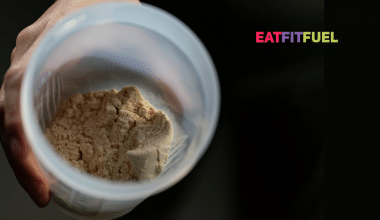Table of Contents
Biohacking, the practice of optimizing one’s biology through science-based interventions, has gained significant traction in the fitness industry. By leveraging cutting-edge technologies and innovative approaches, fitness enthusiasts and athletes alike are discovering new ways to enhance their performance, recover faster, and push the boundaries of their physical capabilities. Biohacking encompasses a wide range of techniques, from personalized nutrition and targeted supplementation to sleep optimization and advanced training methods. While some biohacking practices may seem unconventional or even controversial, the underlying goal remains the same: to unlock the body’s full potential and achieve peak fitness performance. In this article, we will explore the science behind biohacking, delve into specific techniques aimed at optimizing nutrition, sleep, exercise, recovery, and mental performance, and discuss the potential risks and considerations associated with these approaches. By understanding and responsibly applying biohacking principles, individuals can take their fitness journey to new heights and redefine what is possible for their physical and mental well-being.
The Science Behind Biohacking
To grasp the potential of biohacking for fitness, it is essential to understand the body’s natural processes and identify areas for optimization. One fundamental aspect of human biology is circadian rhythms, the 24-hour internal clock that regulates various physiological functions, including sleep-wake cycles, hormone production, and metabolism. By aligning our lifestyle habits with these natural rhythms, we can improve sleep quality, energy levels, and overall well-being.
Hormonal balance is another crucial factor in fitness performance. Hormones such as testosterone, growth hormone, and insulin play vital roles in muscle growth, fat loss, and energy regulation. Biohacking techniques aim to optimize hormonal levels through targeted nutrition, supplementation, and lifestyle interventions, such as intermittent fasting and stress management.
Nutrient absorption and utilization also play a significant role in fitness performance. By understanding how the body processes and utilizes different macronutrients (proteins, carbohydrates, and fats) and micronutrients (vitamins and minerals), individuals can tailor their diets to support their specific fitness goals. This may involve incorporating nutrient-dense foods, timing meals strategically, and using supplements to address any deficiencies or enhance specific bodily functions.
Sleep quality and duration are often overlooked aspects of fitness, but they are essential for recovery, muscle growth, and cognitive function. Biohacking approaches to sleep optimization include managing exposure to blue light from electronic devices, regulating bedroom temperature, and using natural sleep supplements like melatonin or magnesium.
Exercise and recovery are critical components of any fitness routine, and biohacking techniques can help maximize their effectiveness. High-intensity interval training (HIIT) has gained popularity for its ability to stimulate fat loss and muscle gain in a time-efficient manner. Blood flow restriction training, which involves exercising with reduced blood flow to the limbs, has shown promise for enhancing muscle growth and aiding injury rehabilitation.
By understanding the science behind these various aspects of human biology, biohackers can develop targeted strategies to optimize their fitness performance and unlock their body’s full potential.
Nutritional Biohacking

Nutritional biohacking involves tailoring one’s diet and supplementation regimen to optimize physical performance and overall health. One emerging field in this area is nutrigenomics, which explores the relationship between genetics and nutrition. By understanding an individual’s genetic profile, it becomes possible to personalize dietary recommendations based on how their body processes and responds to different nutrients.
Genetic testing can reveal variations in genes related to nutrient absorption, metabolism, and sensitivity to certain foods. For example, some individuals may have a genetic predisposition to insulin resistance, making them more sensitive to high-carbohydrate diets. Others may have variations in genes related to fat metabolism, influencing their ability to process and utilize dietary fats. By taking these genetic factors into account, individuals can fine-tune their diets to support their unique needs and fitness goals.
Targeted supplementation is another aspect of nutritional biohacking. Nootropics, sometimes referred to as “smart drugs,” are supplements designed to enhance cognitive function, including memory, focus, and mental clarity. Common nootropics include compounds like caffeine, L-theanine, and creatine, which have been shown to improve brain function and support overall mental performance.
Adaptogens, such as ashwagandha, rhodiola, and ginseng, are another class of supplements gaining popularity among biohackers. These natural compounds help the body adapt to stress, improve resilience, and support recovery from physical and mental exertion. By incorporating adaptogens into their supplementation regimen, individuals can better manage the demands of intense training and optimize their overall performance.
Micronutrient optimization is also a key consideration in nutritional biohacking. Vitamins, minerals, and other essential nutrients play crucial roles in cellular function, energy production, and recovery. By identifying and addressing any micronutrient deficiencies through targeted supplementation or dietary changes, individuals can support optimal bodily functions and enhance their fitness performance.
Intermittent fasting, an eating pattern that alternates between periods of fasting and feeding, has gained significant attention in the biohacking community. By restricting food intake to specific time windows, intermittent fasting has been shown to improve insulin sensitivity, increase fat burning, and promote cellular repair and regeneration. This approach can be particularly beneficial for individuals looking to optimize body composition and support overall health.
It is important to note that while nutritional biohacking can offer significant benefits, it is always advisable to consult with a qualified healthcare professional or registered dietitian before making drastic changes to one’s diet or supplementation regimen. Individual responses to different nutritional strategies can vary, and it is crucial to ensure that any changes are safe and appropriate for one’s unique needs and health status.
Sleep Optimization

Sleep is a critical component of overall health and fitness performance, yet it is often overlooked or neglected in the pursuit of peak physical condition. Adequate sleep is essential for muscle recovery and growth, cognitive function, and decision-making abilities. Biohacking techniques aimed at optimizing sleep can significantly enhance an individual’s overall fitness journey.
One of the primary factors influencing sleep quality is exposure to blue light, particularly from electronic devices such as smartphones, tablets, and computers. Blue light suppresses the production of melatonin, a hormone that regulates the sleep-wake cycle. By managing blue light exposure in the hours leading up to bedtime, individuals can improve their sleep quality and duration. This can be achieved through the use of blue light blocking glasses, adjusting device settings to reduce blue light emission, or establishing a digital curfew to minimize electronic use before sleep.
Temperature regulation is another key aspect of sleep optimization. The body’s core temperature naturally drops during sleep, and creating a cool sleeping environment can facilitate this process. Biohackers often recommend keeping the bedroom temperature between 60-67°F (15-19°C) to promote optimal sleep quality. Investing in breathable bedding materials and using cooling mattress pads can further enhance temperature regulation during sleep.
Natural sleep supplements can also be used to support sleep quality and duration. Melatonin, a hormone naturally produced by the body, can be taken as a supplement to help regulate the sleep-wake cycle. Magnesium, an essential mineral involved in over 300 enzymatic reactions in the body, has been shown to improve sleep quality and reduce the time it takes to fall asleep. Other natural sleep aids include valerian root, chamomile, and passion flower, which have calming and relaxing properties.
Monitoring sleep quality and duration is crucial for assessing the effectiveness of sleep optimization strategies. Wearable technology, such as smartwatches and fitness trackers, can provide valuable insights into sleep patterns, including the amount of time spent in different sleep stages (light, deep, and REM sleep). Sleep tracking apps, which often use the device’s accelerometer to detect movement during sleep, can also offer useful data on sleep quality and duration.
By prioritizing sleep and implementing biohacking techniques for sleep optimization, individuals can enhance their recovery, cognitive performance, and overall fitness progress. However, it is important to recognize that sleep is just one piece of the larger puzzle when it comes to optimizing health and fitness. A comprehensive approach that addresses nutrition, exercise, stress management, and other lifestyle factors is essential for achieving sustainable results.
Exercise and Recovery Biohacking

Exercise and recovery are two critical components of any fitness routine, and biohacking techniques can help optimize both aspects to maximize performance and minimize the risk of injury.
High-Intensity Interval Training (HIIT) has gained significant popularity in recent years due to its ability to elicit significant improvements in cardiovascular fitness, fat loss, and muscle gain in a time-efficient manner. HIIT involves alternating between short bursts of intense exercise and periods of rest or low-intensity activity. By manipulating work-to-rest ratios, individuals can tailor their HIIT workouts to their specific fitness goals and current conditioning level. For example, a 1:1 ratio of work to rest (e.g., 30 seconds of all-out effort followed by 30 seconds of rest) may be more suitable for developing power and explosiveness, while a 1:2 ratio (e.g., 20 seconds of high-intensity work followed by 40 seconds of rest) may be more appropriate for improving aerobic capacity and fat loss.
Blood flow restriction (BFR) training is another biohacking technique that has gained attention for its potential to enhance muscle growth and aid in injury rehabilitation. BFR involves exercising with reduced blood flow to the working muscles, typically achieved by applying a specialized tourniquet or cuff to the limbs. By restricting blood flow, BFR creates an anaerobic environment in the muscles, leading to increased metabolic stress and cellular swelling. These mechanisms have been shown to stimulate muscle protein synthesis and promote hypertrophy, even when using relatively light loads. BFR can be particularly useful for individuals recovering from injuries, as it allows them to maintain muscle mass and strength without placing excessive stress on the affected area.
Recovery techniques are equally important for optimizing fitness performance and preventing burnout or injury. Cryotherapy, which involves exposing the body to extremely cold temperatures for short periods, has gained popularity among athletes and fitness enthusiasts. Cold water immersion, such as taking ice baths or using cryotherapy chambers, can help reduce inflammation, alleviate muscle soreness, and promote faster recovery between training sessions.
On the other end of the temperature spectrum, heat therapy, such as using infrared saunas, can also offer recovery benefits. Infrared saunas emit light waves that penetrate deep into the body’s tissues, promoting relaxation, improving circulation, and aiding in the removal of toxins through sweating. Regular sauna use has been associated with reduced muscle soreness, improved cardiovascular function, and enhanced overall recovery.
Compression garments, such as tights or sleeves, are another tool in the biohacker’s recovery arsenal. These garments apply controlled pressure to the limbs, which can help improve blood flow, reduce muscle oscillation during exercise, and minimize the risk of delayed-onset muscle soreness (DOMS). Massage, whether performed by a therapist or using self-massage tools like foam rollers, can also help alleviate muscle tension, improve flexibility, and promote relaxation.
By incorporating these exercise and recovery biohacking techniques into their fitness routines, individuals can optimize their performance, minimize the risk of injury, and accelerate their progress towards their goals. However, it is important to approach these techniques with caution and consult with a qualified fitness professional to ensure proper application and safety.
Mental Performance Biohacking

While physical fitness is often the primary focus of biohacking, optimizing mental performance is equally important for overall well-being and success in both athletic and non-athletic pursuits. Mental performance biohacking involves techniques and practices aimed at enhancing cognitive function, reducing stress, and promoting emotional regulation.
Meditation and mindfulness practices have gained significant attention in recent years for their ability to improve mental clarity, focus, and emotional well-being. Regular meditation has been shown to reduce stress, anxiety, and depression while enhancing attention, creativity, and overall cognitive function. Mindfulness practices, such as deep breathing exercises and body scans, can help individuals develop greater self-awareness, regulate their emotions, and improve their ability to stay present in the moment.
Neurofeedback training is another biohacking technique that has shown promise for optimizing brainwave patterns and improving mental performance. Neurofeedback involves using electroencephalography (EEG) to monitor brainwave activity in real-time and providing feedback to help individuals learn to regulate their brain function. By training specific brainwave patterns, such as increasing alpha waves associated with relaxation and creativity or reducing theta waves linked to distractibility, individuals can optimize their mental states for peak performance in various domains, including sports, academics, and creative pursuits.
Nootropic supplementation is another area of interest for mental performance biohacking. Nootropics, as mentioned earlier, are compounds that enhance cognitive function, particularly memory, learning, and focus. Some popular natural nootropics include caffeine, L-theanine (an amino acid found in green tea), and omega-3 fatty acids, which have been shown to support brain health and improve cognitive performance. Synthetic nootropics, such as piracetam and modafinil, have also gained attention for their potential cognitive-enhancing effects, although their long-term safety and efficacy remain a topic of debate.
It is important to approach mental performance biohacking with caution and to prioritize natural, sustainable practices over reliance on synthetic compounds. While nootropics may offer short-term benefits, they should not be seen as a replacement for healthy lifestyle habits, such as regular exercise, balanced nutrition, and sufficient sleep. Additionally, individuals should be aware of potential side effects and interactions associated with nootropic supplements and should consult with a qualified healthcare professional before incorporating them into their routines.
Ultimately, optimizing mental performance through biohacking requires a holistic approach that addresses both physiological and psychological factors. By combining mindfulness practices, neurofeedback training, and targeted supplementation with a foundation of healthy lifestyle habits, individuals can unlock their full cognitive potential and achieve greater success in their personal and professional lives.
Risks and Considerations

While biohacking techniques offer numerous potential benefits for fitness performance and overall well-being, it is crucial to approach these practices with caution and to be aware of the potential risks and considerations involved.
One of the most important aspects of biohacking is consulting with qualified healthcare professionals, such as physicians, registered dietitians, and certified fitness trainers, before implementing any significant changes to one’s lifestyle or routines. These experts can provide personalized guidance based on an individual’s unique health status, goals, and risk factors, helping to ensure the safety and effectiveness of any biohacking approaches.
It is also essential to be aware of the potential side effects and interactions associated with various biohacking techniques, particularly when it comes to supplementation and unconventional practices. Some supplements, such as nootropics or performance-enhancing substances, may interact with prescription medications or have unintended consequences when used improperly. Similarly, practices such as extreme fasting, cryotherapy, or high-intensity training may not be suitable for everyone and could lead to adverse health outcomes if not approached with caution and proper guidance.
Another key consideration in biohacking is the importance of adopting a holistic approach to health and fitness. While targeted interventions can offer significant benefits, they should not be seen as a substitute for a well-rounded lifestyle that prioritizes regular exercise, balanced nutrition, stress management, and sufficient rest and recovery. Biohacking techniques should be used to complement and enhance these foundational elements rather than replace them entirely.
Finally, it is important to maintain a balanced perspective when pursuing biohacking for fitness performance. While the desire to optimize one’s biology and unlock peak performance is understandable, it should not come at the cost of overall health, well-being, or enjoyment of life. Pursuing biohacking responsibly involves setting realistic goals, listening to one’s body, and maintaining a healthy relationship with food, exercise, and self-care practices.
Conclusion: Biohacking for Fitness
Biohacking for fitness performance offers a fascinating and promising avenue for individuals seeking to optimize their physical and mental capabilities. By leveraging the latest scientific understanding of human biology and applying targeted interventions in areas such as nutrition, sleep, exercise, recovery, and mental performance, biohackers can unlock their full potential and push the boundaries of what is possible for their health and fitness.
However, it is crucial to approach biohacking with a responsible and informed mindset, prioritizing safety, sustainability, and a holistic perspective on health and well-being. Consulting with qualified healthcare professionals, being aware of potential risks and considerations, and maintaining a balanced approach to lifestyle habits are essential for reaping the benefits of biohacking while minimizing any potential drawbacks.
As the field of biohacking continues to evolve and gain popularity in the fitness industry, it is likely that we will see even more innovative approaches and technologies emerge to help individuals optimize their performance and achieve their goals. By staying informed, open-minded, and grounded in the foundational principles of health and wellness, fitness enthusiasts can harness the power of biohacking to transform their bodies, minds, and lives, ultimately redefining the limits of human potential.
Kickstart your health journey with expert advice, nutritious recipes, and effective workouts at EatFitFuel.com. Sign up to our newsletter!
Further Reading
To deepen your understanding of biohacking for fitness and overall health, here are some insightful resources:
- The Science of Circadian Rhythms – Explore how aligning your daily activities with your circadian rhythms can enhance sleep, metabolism, and overall health. Learn more on National Institute of General Medical Sciences.
- Mindfulness and Meditation for Mental Performance – Learn how mindfulness practices and meditation can improve focus, reduce stress, and enhance cognitive function. Read more at American Psychological Association.






